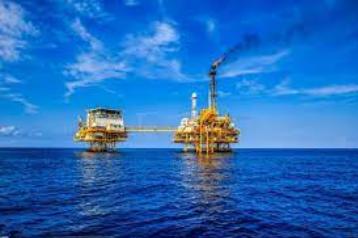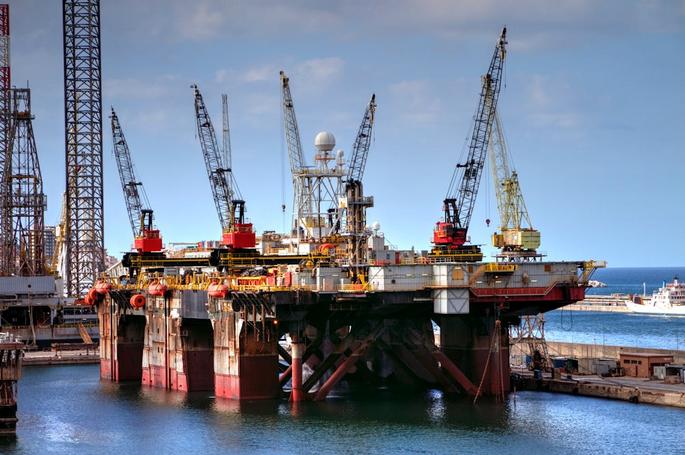Types of Offshore Structures
Offshore structures are engineering marvels designed to operate in challenging marine environments. These structures are primarily used for exploration, extraction, and production of resources such as oil, gas, and renewable energy. Depending on their purpose, location, and environmental conditions, offshore structures can be broadly categorized into fixed platforms, floating platforms, and subsea structures. Below is an elaborate discussion on each type.
1. Fixed Platforms
Fixed platforms are immovable structures anchored directly to the seabed. They are typically used in shallow to medium water depths (up to approximately 500 meters). Fixed platforms are known for their stability and long-term durability.
Key Types:
- Steel Jacket Platforms: These consist of a lattice-like steel framework, or “jacket,” which is anchored to the seabed with piles. The platform deck is supported above the water level, housing drilling, processing, and living facilities.
- Concrete Gravity Platforms: Built with reinforced concrete, these platforms rely on their massive weight to stay in place on the seabed. They are commonly used in areas with harsh environmental conditions.
- Compliant Towers: These are flexible structures designed to sway with wave forces, suitable for deeper waters (up to 1,000 meters).
Advantages:
- High stability and load-bearing capacity.
- Long operational lifespan.
Challenges:
- High construction and installation costs.
- Limited to relatively shallow waters.
2. Floating Platforms
Floating platforms are used in deep and ultra-deep waters where fixed platforms are impractical. These structures are designed to float on the surface of the water while being anchored to the seabed using mooring systems.
Key Types:
- Semi-Submersible Platforms: These partially submerged structures maintain stability through a combination of buoyancy and mooring. They are versatile and can be used for drilling or production.
- Floating Production Storage and Offloading Units (FPSOs): FPSOs are ships or ship-like structures used to process and store hydrocarbons. They are often moored in deep-water fields.
- Spar Platforms: Featuring a cylindrical hull, spars are anchored to the seabed with tensioned mooring lines, suitable for ultra-deep waters (over 2,500 meters).
- Tension-Leg Platforms (TLPs): These are tethered to the seabed with vertical tensioned tendons, providing stability for operations in waters over 1,000 meters.
Advantages:
- Suitable for deep and ultra-deep waters.
- Relatively quicker installation compared to fixed platforms.
- Flexibility to relocate.
Challenges:
- Higher operational and maintenance costs.
- Vulnerability to extreme weather conditions.
3. Subsea Structures
Subsea structures are placed directly on the seabed and are primarily used to support underwater operations such as drilling, production, and transportation of hydrocarbons.
Key Components:
- Subsea Wellheads and Trees: These systems manage the flow of oil or gas from the reservoir to the production facilities.
- Manifolds and Templates: Used to consolidate and direct the flow from multiple wells to a single pipeline or riser.
- Subsea Pipelines and Risers: Pipelines transport hydrocarbons from the subsea wellheads to onshore facilities or floating platforms, while risers connect pipelines to surface facilities.
Advantages:
- Minimal surface footprint, reducing environmental and visual impact.
- Capable of operating in ultra-deep waters.
Challenges:
- Complex installation processes.
- High maintenance costs due to harsh underwater conditions.
Comparative Overview
| Feature | Fixed Platforms | Floating Platforms | Subsea Structures |
|---|---|---|---|
| Water Depth Suitability | Shallow to medium | Deep to ultra-deep | Ultra-deep |
| Mobility | Immovable | Relocatable | Immovable |
| Cost | High (construction) | High (operation/maintenance) | High (installation/maintenance) |
| Environmental Impact | Moderate | High (installation impact) | Minimal |
| Applications | Long-term projects | Deepwater drilling/production | Subsea operations |
Conclusion
The choice of offshore structure depends on several factors, including water depth, environmental conditions, operational requirements, and budget. Fixed platforms are ideal for stable, shallow-water operations, while floating platforms and subsea structures are indispensable for deeper and more complex environments. As technology advances, these structures are becoming increasingly efficient, sustainable, and capable of withstanding the harsh challenges of the marine world.

